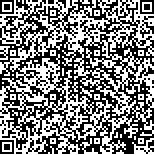| 引用本文: | 肖倩倩,王晓红,刘晓利,李爱倩,孟莹,宋安妮,程忠哲.基于UHPLC-QE-MS分析结合网络药理学探讨小叶黄杨生物碱治疗阿尔茨海默病的作用机制[J].中国现代应用药学,2022,39(23):3045-3054. |
| XIAO Qianqian,WANG Xiaohong,LIU Xiaoli,LI Aiqian,MENG Ying,SONG Anni,CHENG Zhongzhe.Study on Mechanism of Alkaloids Therapy of Buxus Microphylla in Treating Alzheimer’s Disease Based on UHPLC-QE-MS Analysis Combined with Network Pharmacology[J].Chin J Mod Appl Pharm(中国现代应用药学),2022,39(23):3045-3054. |
|
| 本文已被:浏览 1402次 下载 674次 |

码上扫一扫! |
|
|
| 基于UHPLC-QE-MS分析结合网络药理学探讨小叶黄杨生物碱治疗阿尔茨海默病的作用机制 |
|
肖倩倩1, 王晓红1, 刘晓利2, 李爱倩3, 孟莹1, 宋安妮1, 程忠哲1
|
|
1.潍坊医学院药学院, 山东 潍坊 261053;2.淄博市疾病预防控制中心, 山东 淄博 255000;3.青岛大学附属医院, 青岛 266500
|
|
| 摘要: |
| 目的 鉴定小叶黄杨中生物碱类化学成分,探讨治疗阿尔茨海默病的物质基础和作用机制。方法 表征小叶黄杨生物碱成分,并利用PubChem、SwissADME、Swiss Target Prediction、Genecards和OMIM等数据库获取小叶黄杨生物碱的活性成分和对应靶点,以及阿尔茨海默病的相关靶点;运用Cytoscape3.9.0软件绘制“成分-靶点”网络图;运用String平台构建蛋白互作网络图;运用微生信在线绘图工具进行通路富集分析可视化;用AutodockTools-1.5.6软件对筛选出的核心成分做分子对接。结果 鉴定小叶黄杨生物碱成分23个,筛选有效成分19个,对应靶点216个;筛选阿尔茨海默病靶点880个,药物-疾病交集靶点49个;GO富集分析主要相关的生物过程有化学性突触传递,顺行跨突触信号,跨突触信号等;KEGG通路富集分析中神经活性配体-受体相互作用,5-羟色胺能突触,cAMP信号等为主要信号通路。分子对接显示筛选的核心靶点和核心成分均有较强结合力。结论 本研究初步证明了小叶黄杨生物碱成分可以多成分、多靶点、多通路共同作用治疗阿尔茨海默病,为进一步深入研究小叶黄杨生物碱对阿尔茨海默病作用的物质基础以及作用机制提供参考。 |
| 关键词: 小叶黄杨 生物碱 液相色谱-质谱联用 网络药理学 分子对接 |
| DOI:10.13748/j.cnki.issn1007-7693.2022.23.001 |
| 分类号:R966 |
| 基金项目:国家自然科学基金项目(81803704) |
|
| Study on Mechanism of Alkaloids Therapy of Buxus Microphylla in Treating Alzheimer’s Disease Based on UHPLC-QE-MS Analysis Combined with Network Pharmacology |
|
XIAO Qianqian1, WANG Xiaohong1, LIU Xiaoli2, LI Aiqian3, MENG Ying1, SONG Anni1, CHENG Zhongzhe1
|
|
1.School of Pharmacy, Weifang Medical University, Weifang 261053, China;2.Zibo Center for Disease Control and Prevention, Zibo 255000, China;3.The Affiliated Hospital of Qingdao University, Qingdao 266500, China
|
| Abstract: |
| OBJECTIVE To identify the chemical constituents of alkaloids in Buxus microphylla, and to explore the material basis and mechanism of action in the treatment of Alzheimer’s disease. METHODS The alkaloid components of Buxus microphylla were characterized, and the active components and corresponding targets of Buxus microphylla alkaloids and related targets of Alzheimer’s disease were obtained by PubChem, SwissADME, Swiss Target Prediction, Genecards and OMIM databases. Cytoscape 3.9.0 software was used to draw the “component-target” network diagram. The protein-protein interaction network was constructed by String platform. The visualization of pathway enrichment analysis was carried out by using the on-line drawing tool of bioinformatics. Molecular docking was performed on the screened core components with AutodockTools-1.5.6 software. RESULTS Twenty-three alkaloid components of Buxus microphylla were identified, 19 active components and 216 corresponding targets were screened. Eight hundred and eighty Alzheimer’s disease targets and 49 drug disease intersection targets were screened. The main biological processes related to GO enrichment analysis include chemical synaptic transmission, anterograde cross synaptic signal, cross synaptic signal and so on. In KEGG pathway enrichment analysis, neuroactive ligand receptor interaction, serotonergic synapse and cAMP signal were the main signal pathways. Molecular docking showed that the screened core targets and core components had strong binding force. CONCLUSION This study preliminarily proves that the alkaloid components of Buxus microphylla can act together in multiple components, multiple targets and multiple pathways to treat Alzheimer’s disease. It provides a reference for further research on the material basis and mechanism of the effect of Buxus microphylla alkaloids on Alzheimer’s disease. |
| Key words: Buxus microphylla alkaloids LC-MS network pharmacology molecular docking |
